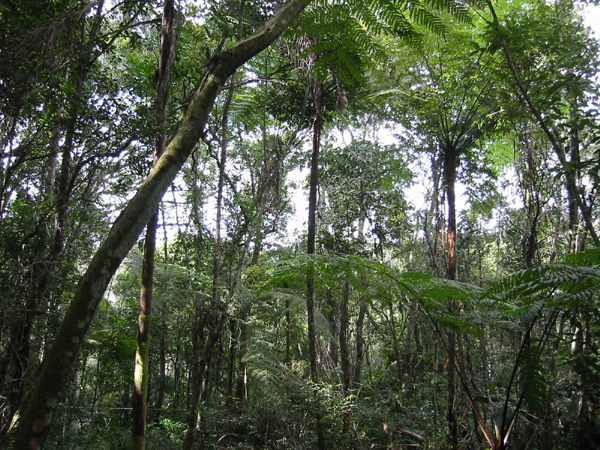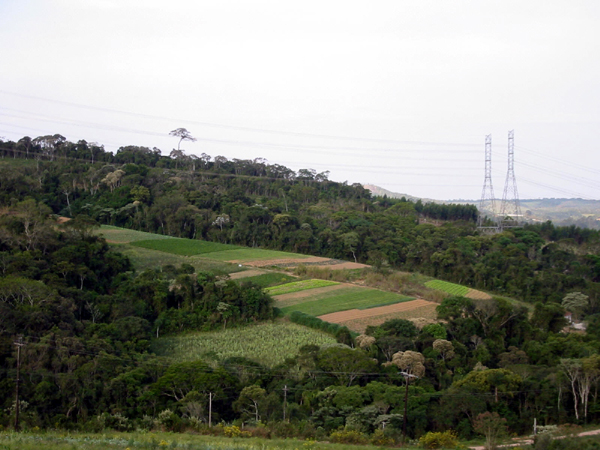BioCAPSP - Biodiversity conservation in fragmented landscapes at the Atlantic Plateau of São Paulo (Brazil)
Project management:
Staff responsible:
Dr. Christoph Knogge and Dr. Henning Steinicke
Status:
The project is funded by the BMBF - Federal Ministry of Education and Research
Project duration:
01. January 2003 - 31. July 2009
The project is part of the programme "Science and Technology for the Mata Atlântica", which is carried out in co-operation between the Conselho Nacional de Desenvolvimento Cientifíco e Tecnológico (CNPq, Brazil) and the Federal Ministry of Education and Research (BMBF, Germany). The program aims to develop efficient conservation strategies as well as suggestions for a sustainable management and use of endangered remnants of the Atlantic Forest.

The intention of the German contribution within this programme is the development of innovative methods for a quantification and understandig of effects of fragmentation on biodiversity within the study area 'Caucaia do Alto' (State of São Paulo). As a first approach effects of both, fragment size and connectivity are related to species richness and diversity, species viability and forest regeneration processes. Based on this fundamental scientific knowledge models on metapopulation dynamics and forest regeneration will be developed. These data also provide a sound basis for the establishment of a regional conservation network of priority sites which takes into account the economic and social interests of local inhabitants.
The following main tasks are carried out in a German - Brazilian co-operation:
- Field sampling and analysis of species richness and diversity of small mammals, birds, amphibians and reptiles as well as soil organisms in relation to size, configuration, connectivity and habitat quality of forest remnants.
- Prediction of the effects of fragmentation on population biology and genetics of selected species.
- Simulation of regeneration processes and spatio-temporal vegetation dynamics in secondary forests.
- Development of a network of priority sites for nature conservation.
- Analysis of environmental perception, use of natural resources and socio-economic changes.
- Preparation of the scientific project results for decision makers, requirements of regional planning, NGOs, and local inhabitants.
Forest nowadays covers 31 % of the region but is mostly restricted to small fragments with a size less than 100 ha. Though the forest fragments are of secondary origin (80 years), and are mostly composed of trees and shrubs of autochthonous species. The matrix predominately consists of intensively used agricultural fields and pastures (33 %), areas with rural buildings and urban areas (15 %), early stages of regeneration mostly with native vegetation (10 %), and pine and eucalyptus plantations (7 %).

Project partner:
Additional information on the Mata Atlântica Programme.
Disclaimer:
The UFZ is not responsible for the context provided by external links.
